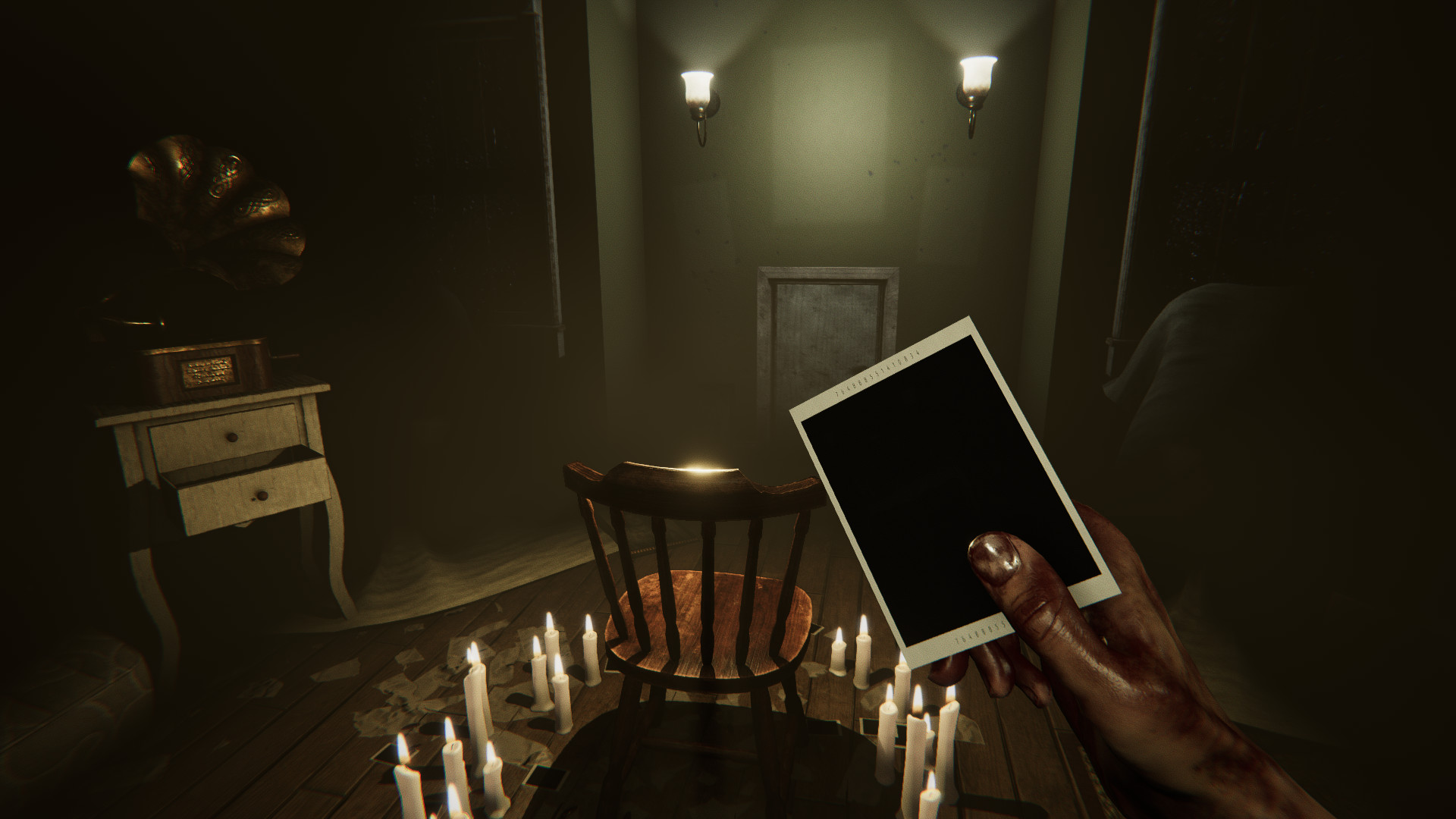
I wake up in a darkened room, to find my hands covered in blood. The persistent thud of someone banging on the locked door echoes off the four walls, as a booming voice on the other side demands answers. “Why did you do it?” Terrified and disorientated, I stumble around, seeing only via the light of a TV set, in a bid to find the objects needed to aid my escape. What have I done?
This intro sequence sets the tone perfectly for Bloodious Games’ psychological horror Madison. Right off the bat, you don’t know what to expect. You’re on edge and, most importantly, afraid. Something horrible has happened and you, a young man called Luca, seem to be responsible for it. It’s all linked somehow to a serial killer called Madison Hale and her Polaroid camera – which you have now come into possession (no pun intended) of.
You would be forgiven for expecting a horror in the vein of Fatal Frame, then. It’s the immediate connection I made when Madison was announced, and the Polaroid camera was revealed to be a key game mechanic. After all, Fatal Frame is the series that somehow made photos terrifying, requiring you to take pictures of ghosts in order to banish them.
But Fatal Frame Madison isn’t, and that Polaroid camera doesn’t hold the immense importance I hoped it would. Instead, Madison is made for those looking for the puzzling of early Resident Evil games, combined with the jump scares of Five Nights at Freddy’s. And, make no mistake, the jump scares are the crux of Bloodious’ immersive horror.
Shake it
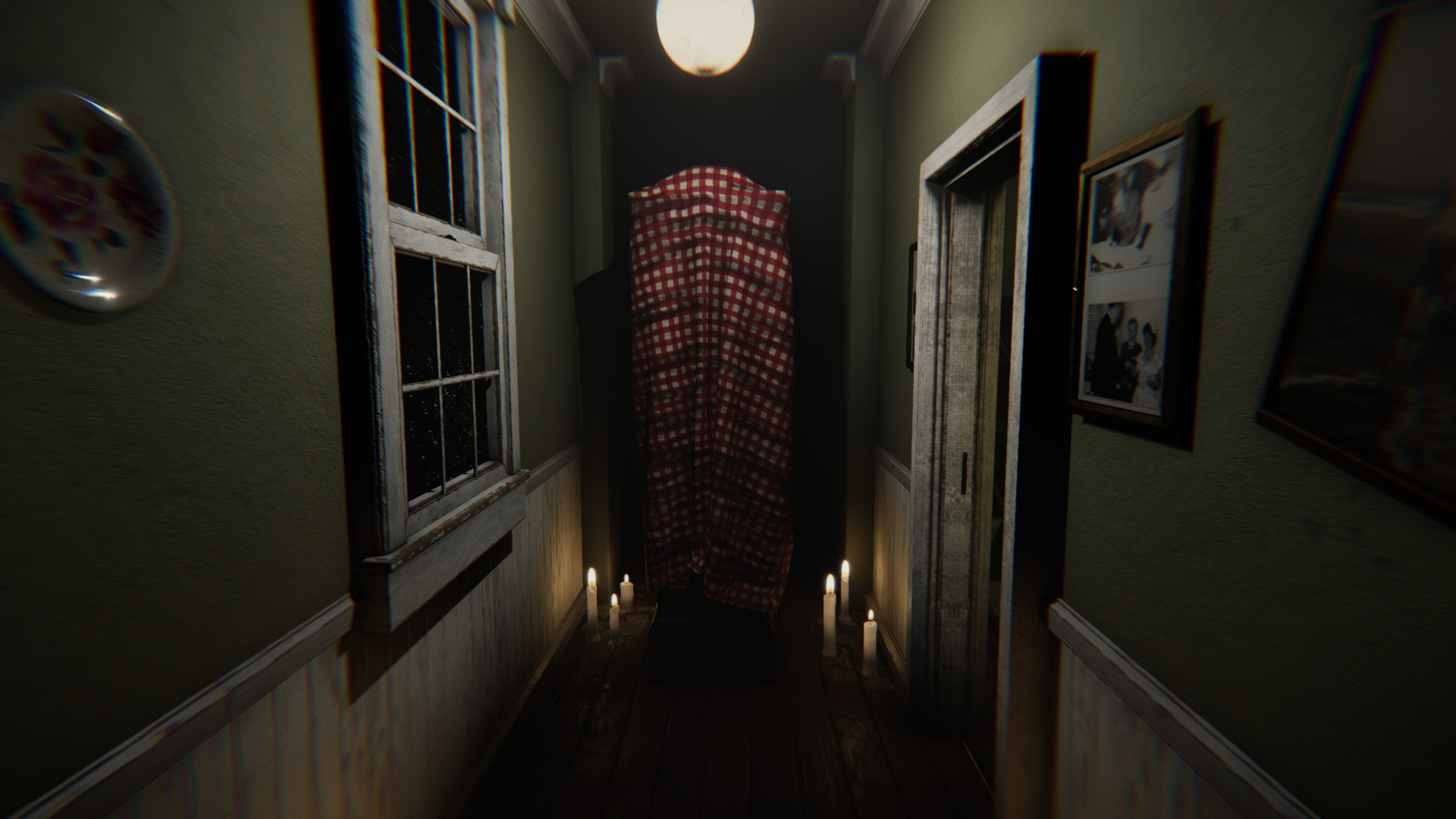
Pretty early on, the seeds of this gruesome situation are sown. Upon picking up your “birthday present” (the camera), a news broadcast in the adjoining room reports that the last assets of Madison Hale have been sold, including, guess what, a camera. The reporter goes on to explain the grisly details of Madison Hale’s atrocities: how she killed her family and took pictures of their bodies with the camera, before ultimately being shot and killed by police.
Madison’s storyline isn’t exactly fresh, but I can live with that. What’s more frustrating is the hand holding. There’s a sweet spot to be found between letting players uncover things completely by themselves, and having your protagonist literally say aloud exactly what’s happening. Especially when he insists on talking over voicemails that are, in themselves, providing pieces of the puzzle. Form an orderly queue to deliver your exposition, please.
Madison’s story isn’t its main draw, of course. You’re likely not intending to play it for the tale of Madison Hale. You’re here for the scares and there are plenty of those to be had.
Get daily insight, inspiration and deals in your inbox
Sign up for breaking news, reviews, opinion, top tech deals, and more.
Fear factor
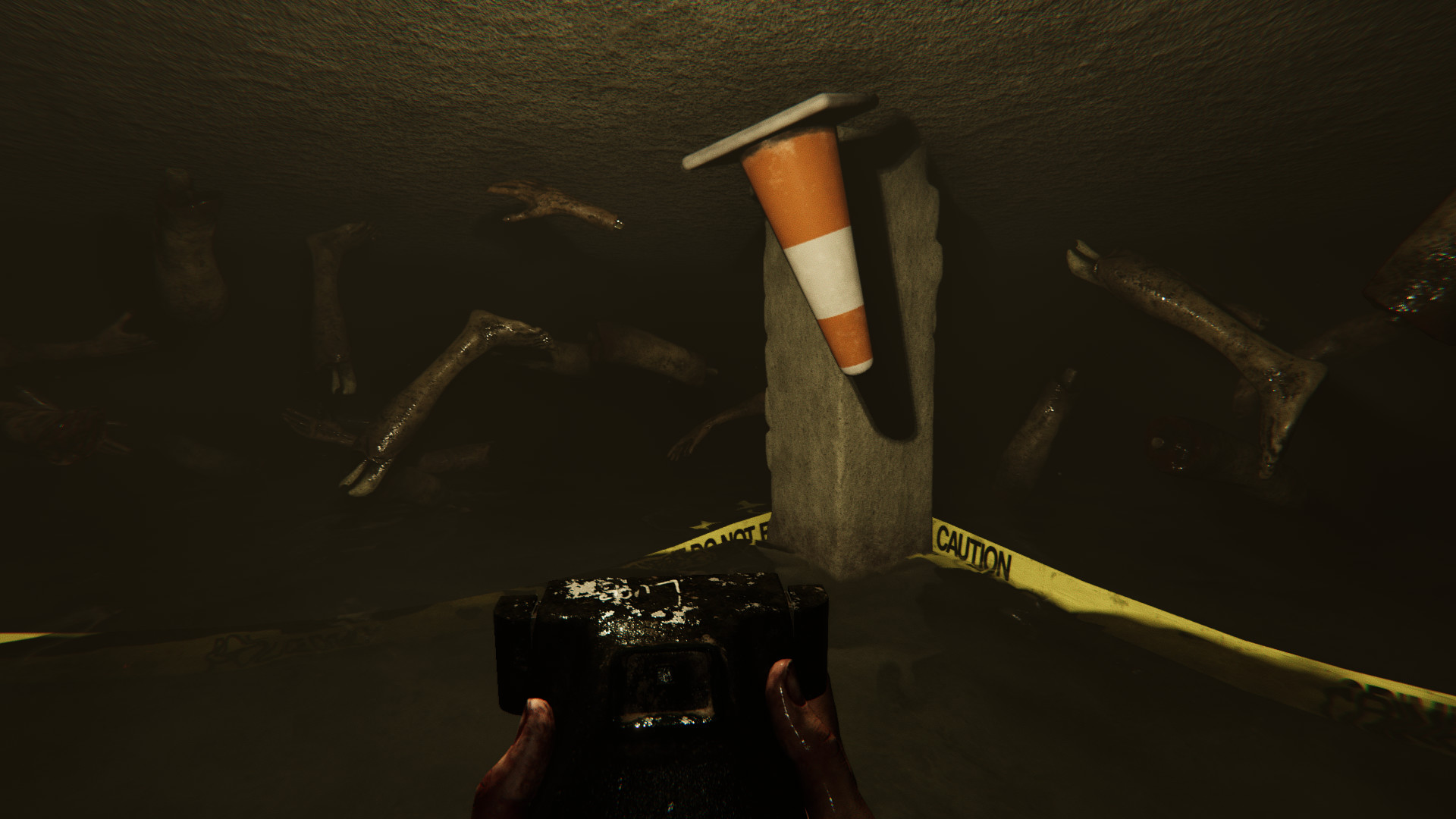
There are two main points of attack in how Madison scares the bejesus out of you: its tense atmosphere, and its often unpredictable jump scares. These complement each other brilliantly.
That constant state of tension means that when something does appear unannounced or jumps out at you, you’re usually unprepared – because it could have happened at any moment.
The main setting is Luca’s grandfather’s house, a maze of a home filled with claustrophobic corridors, tight turns, and locked doors. It’s reminiscent of Visage, one of the best horror games on Game Pass, and holds similar terrors. As you make your way through the place, you never quite know what lies behind the next corner – and the recurring use of creaks, steps and other ominous sound effects mean you’re always leaning in.
That constant state of tension means that when something does appear unannounced or jumps out at you, you’re usually unprepared – because it could have happened at any moment. Other times, you know it’s coming and are pushing yourself forward to face the scare that awaits you. For example, there’s a sequence in a pitch-black well where you must take pictures using your camera to light up the area. You know something lurks in the darkness – it’s just when it’s going to show itself.
This is one of the rare instances in which the camera feels pivotal to Madison’s scares early on. It certainly isn’t the vital defense mechanic I thought it would be, like in Fatal Frame. Instead, it’s used mostly as a means of pushing the story further, in the first half of this (tops) eight-hour game. You take a photograph of something that’s important, it triggers an event of some sort, the world shakes and the developed photo shows something creepier than you saw with your own eyes.
While the camera does have more utility as you go on, it initially feels a bit redundant – and often I forgot I even had it in my arsenal, whipping it out only when I saw something a bit odd looking. It’s a shame too, as the jump scares begin to get tedious a few hours in. While at first, I panicked every time something creaked, I eventually realized that the sound effects were on a loop and disregarded them. The scares happened so often that their impact lessened with each jump.
Resident’s address
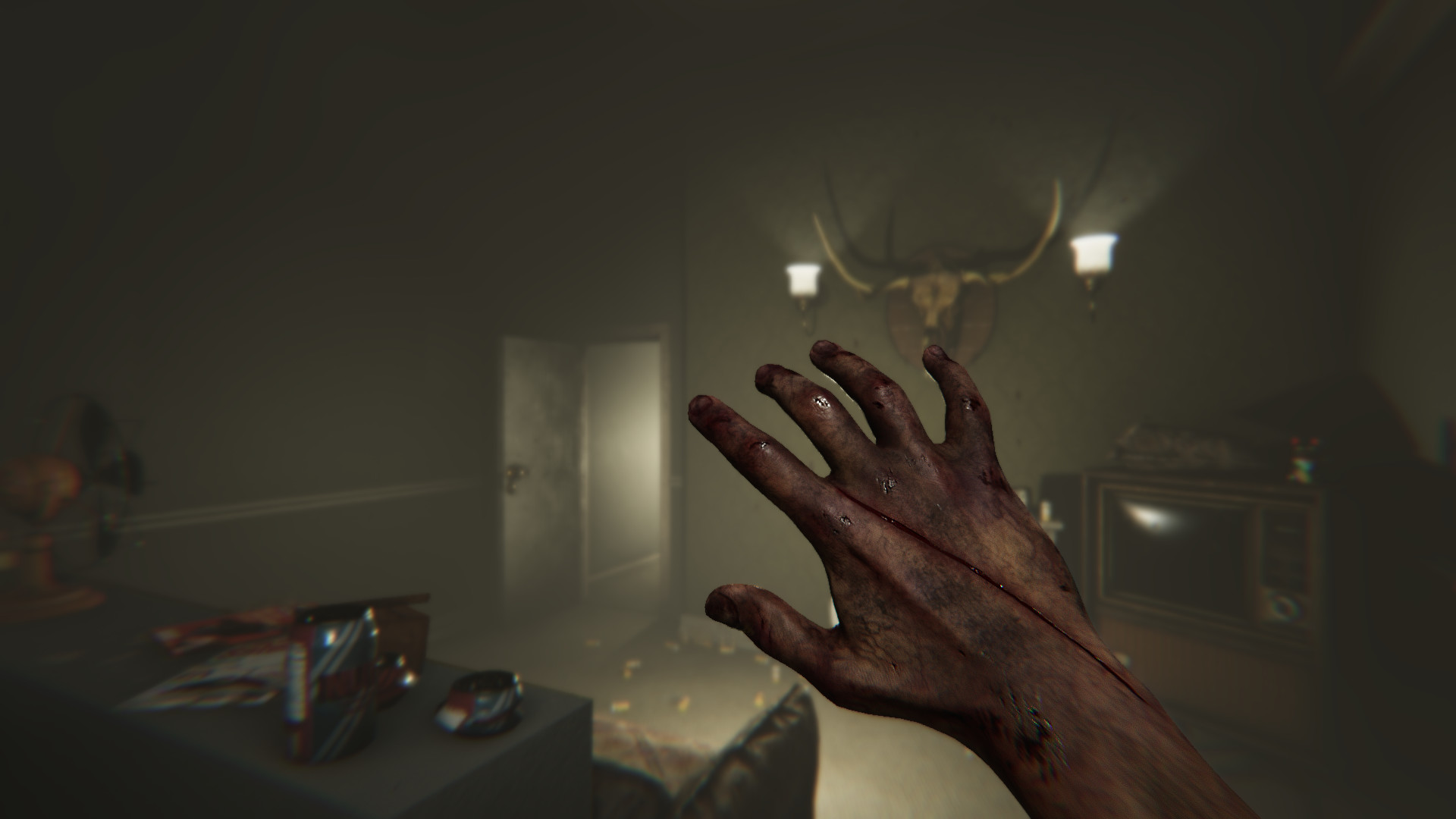
Where Madison does shine, however, is in its puzzles. As you progress you pick up objects that you can use to solve problems, like in Resident Evil. While some of the puzzles are straightforward, others are definitely head-scratchers that might require you to get out a pen and paper. I found myself truly stumped by a mathematical enigma that I simply couldn’t get my head around. Successfully completing them, however, does bring an immense sense of satisfaction that trumps the thrill of the frights. It offers another layer of enjoyment when the scares have faded.
Another similarity with Resident Evil is that you only have a limited inventory in which to store the puzzle pieces you find along the way, meaning you need to backtrack to a safe to store the items you’re not immediately using. While I appreciate this is a callback to old-school horrors which forces you to travel further through the house than you comfortably would, inventory organization is a pain and can slow the pace considerably as you work out whether you want to keep the spade or the crest in your backpack.
There are a few other gameplay elements that feel outdated too. Movement feels clunky and Luca is constantly bobbing his head, which means those with a nauseous disposition may have difficulties as the latter can’t be disabled. I also found it odd that I wasn’t able to adjust the brightness of the game, considering decent lighting is key to horrors – meaning I had to block out all the light in my living room just to see what was happening in Madison’s darker (though still supposedly visible) areas.
Frankenstein’s Mad-ster
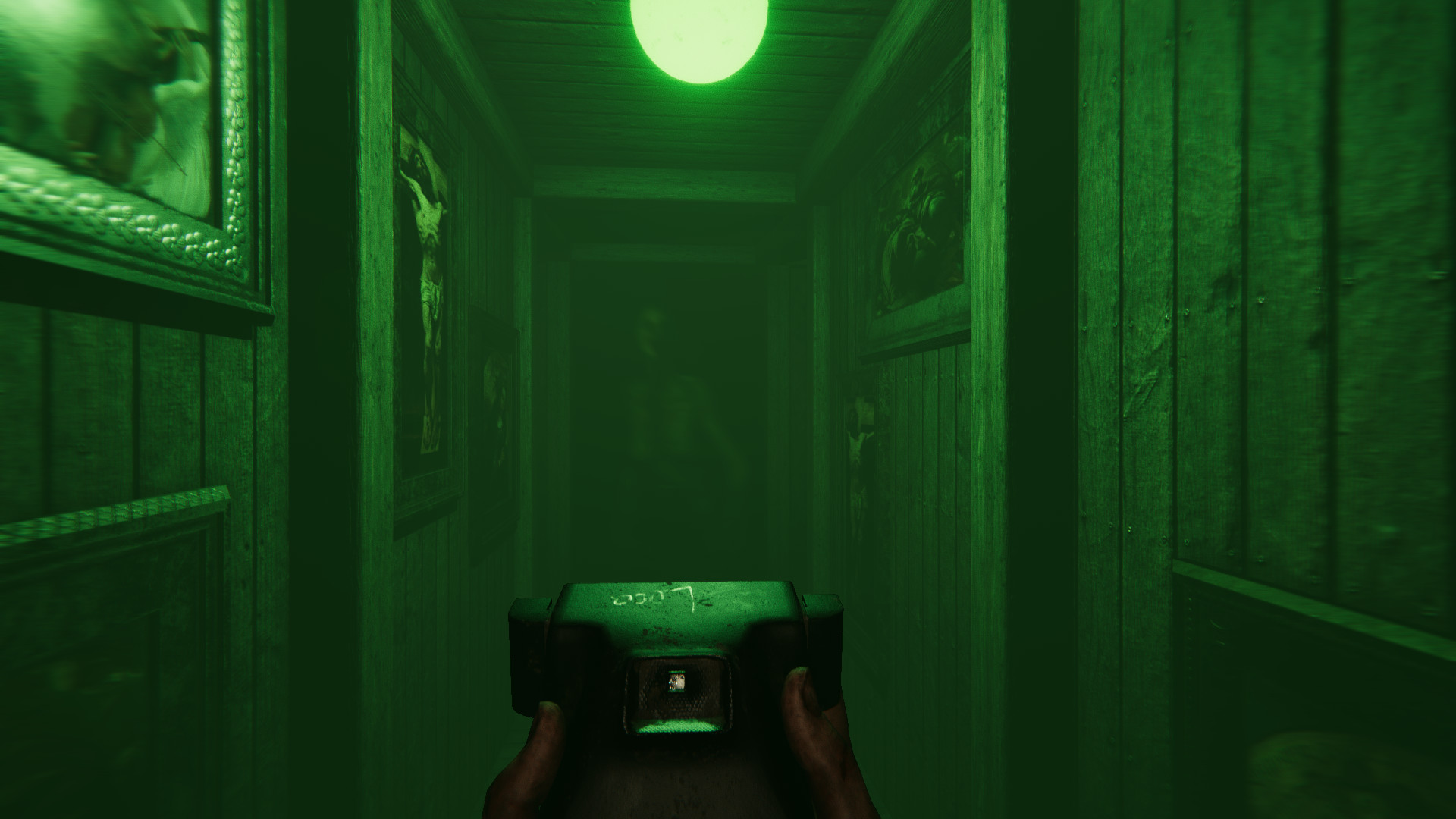
When I began Madison, I thoroughly enjoyed it. It was well-paced, the puzzles were straightforwardly satisfying and the scares felt fresh – but as I went on, it lost its allure. In part, that was due to a save file error I encountered during the review period. I played at least four hours of the game on PS5, went away, and came back to find my file was inaccessible. Developer Bloodious Games has since rectified the error with an update ahead of Madison’s full launch, but it does mean I need to start from scratch.
I will jump back into Madison, though. It has its issues, sure, and I’m not exactly gripped by the story, but I’m keen to work my way through the maze of a house and uncover more intricate puzzles. And, let’s be honest, I’m hoping for some jump scares that force a bloodcurdling scream from me, despite my familiarity with Madison’s soundscape. Yes, I’m one of those kinds of people.
But that’s the kind of people Madison is meant to appeal to. The Five Nights at Freddy's fans who are on tenterhooks, waiting for the other shoe to drop as tension reaches uncomfortable heights. This is a love letter to some of the best horror games of all time, like Fatal Frame, Resident Evil, Visage and even P.T. And while it may not quite stick the landing, Madison is perfect for those in the market for a quick scare – just don't expect to remember it.
An award-winning games journalist, with seven years of experience in games journalism and a degree in journalism from City University, London, Vic brings experience from IGN, Eurogamer, The Telegraph, VG247, Dot Esports and more to the TechRadar table. You may have even heard her on the radio or speaking on a panel, as she’s previously appeared on BBC Radio 4, BBC Radio 5, BBC Radio Ulster and more. Not only is Vic passionate about games, but she's appeared on both panels and podcasts to discuss mental health awareness. Make sure to follow her on Twitter for more.